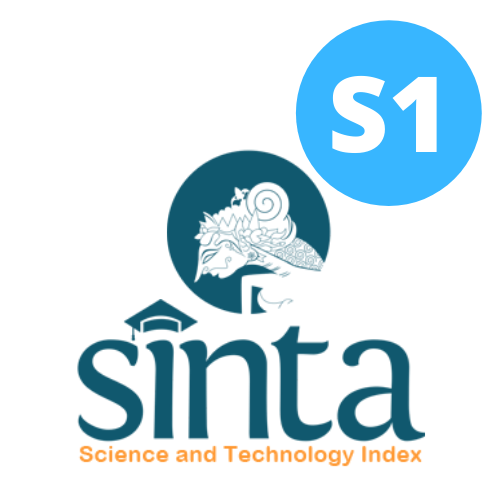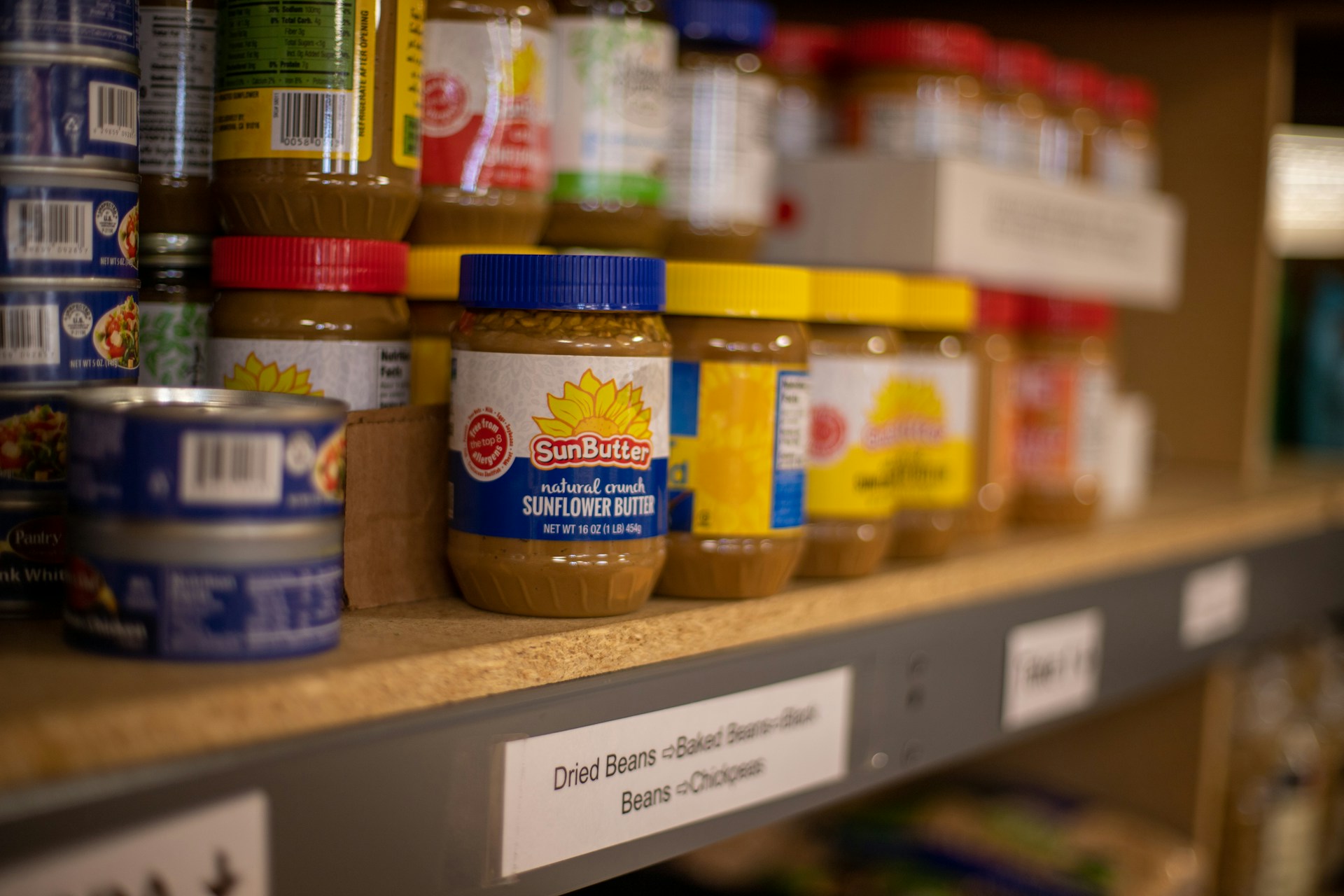Family Characteristics, Food Security, Expenditure, and Dietary Diversity among Families with and without Concurrently Wasted and Stunted Children in Semarang
Karakteristik Keluarga, Ketahanan Pangan, Pengeluaran Pangan, dan Keanekaragaman Pangan Keluarga dengan dan tanpa WaSt (Wasting-Stunting) pada Anak di Kota Semarang

Downloads
Background: Family characteristics, food security, expenditure, and diversity are indirectly associated with children's nutritional status.
Objectives: This study aimed to examine the differences between food security, expenditure, and diversity among children under five with and without concurrent wasting and stunting (WaSt) in Semarang City.
Methods: This study utilized an observational analytic approach with cross-sectional design. Subject selection using a consecutive sampling method obtained 72 subjects consisting of 18 subjects in each group of normal, stunted, wasted, and concurrently wasted and stunted (WaSt). Structured questionnaires collected data on the characteristics of fathers, mothers, and families. Interviews were conducted using the Household Food Insecurity Access Scale (HFIAS), which was obtained to measure food security among families. In contrast, the Individual Dietary Diversity Score (IDDS) was used to obtain food diversity. Differences were analyzed using one-way ANOVA and the Kruskal-Wallis test. A confidence level of 95% was utilized, and the results were significant, with a p-value<0.05
Results: There were significant differences in age, maternal nutrition knowledge, family income, food security, food expenditure, and food diversity between children under five with and without WaSt (p-value=0.010; 0.002; 0.026; 0.001; <0.001; 0.021).
Conclusion: The WaSt group has a different age composition, maternal nutritional knowledge, family income, food security, food expenditure, and food diversity from other groups.
UNICEF, WHO & World Bank Group. Level and trend in child malnutrition. UNICEF/WHO/World Bank Group (2023).
RI, K. Buku Saku Hasil Survei Status Gizi Indonesia (SSGI) 2022. in (Badan Kebijakan Pembangunan Kesehatan Kemenkes RI, 2022).
Kementerian Perencanaan Pembangunan Nasional/Badan Perencanaan Pembangunan Nasional (BAPPENAS). Lampiran Peraturan Presiden Republik Indonesia Nomor 18 Tahun 2020 Tentang Rencana Pembangunan Jangka Menengah Nasional (RPJMN) 2020-2024. National Mid-Term Development Plan 2020-2024 (2020).
Addawiah, R., Hasanah, O. & Deli, H. Gambaran Kejadian Stunting dan Wasting Pada Bayi dan Balita di Tenayan Raya Pekanbaru. J. Nutr. Coll. 9, 228–234 (2020). DOI: 10.14710/jnc.v9i4.28482.
Purba, D. H. et al. Kesehatan dan Gizi Untuk Anak. (Yayasan Kita Menulis, 2021).
Badriyah, L. Hubungan Karakteristik Keluarga, Ekonomi dan Faktor Lain dengan Stunting, Wasting dan Underweight pada Anak Usia 6-23 bulan di Indonesia. J. Ilm. Kesehat. 18, 26–32 (2019). DOI: 10.33221/jikes.v18i1.201.
Sahiledengle, B. et al. Concurrent wasting and stunting among under-five children in the context of Ethiopia: A generalised mixed-effects modelling. Matern. Child Nutr. 19, 1–20 (2023). DOI: 10.1111/mcn.13483.
Garenne, M., Myatt, M., Khara, T., Dolan, C. & Briend, A. Concurrent wasting and stunting among under-five children in Niakhar, Senegal. Matern. Child Nutr. 15, 1–8 (2019). DOI: 10.1111/mcn.12736.
Khara, T., Mwangome, M., Ngari, M. & Dolan, C. Children concurrently Wasting and Stunting: A meta-analysis of prevalence data of children 6–59 months from 84 countries. Matern. Child Nutr. 14, 1–7 (2018). DOI: 10.1111/mcn.12516.
Zaba, T., Conkle, J., Nyawo, M., Foote, D. & Myatt, M. Concurrent wasting and stunting among children 6–59 months: an analysis using district-level survey data in Mozambique. BMC Nutr. 8, 1–10 (2022). https://doi.org/10.1186/s40795-022-00508-9.
Myatt, M. et al. Children who are both Wasting and Stunting are also underweight and have a high risk of death: A descriptive epidemiology of multiple anthropometric deficits using data from 51 countries. Arch. Public Heal. 76, 1–11 (2018). doi: 10.1186/s13690-018-0277-1.
UNICEF Indonesia. Selain Stunting, Wasting Juga Salah Satu Bentuk Masalah Gizi Anak yang Perlu Diwaspadai. Untuk Setiap Anak (2023).
Thurstans, S. et al. The relationship between wasting and stunting in young children: A systematic review. Matern. Child Nutr. 18, (2022). doi: 10.1111/mcn.13246.
Selain Stunting, Wasting Juga Salah Satu Bentuk Masalah Gizi Anak yang Perlu Diwaspadai. WHO (2023).
Ramdhani, A., Handayani, H. & Setiawan, A. Hubungan Pengetahuan Ibu dengan Kejadian Stunting. Semnas Lppm 2, 28–35 (2020).
Addawiah, R., Hasanah, O. & Deli, H. Gambaran Kejadian Stunting dan Wasting pada Bayi dan Balita di Tenayan Raya Pekanbaru. J. Nutr. Coll. 9, 228–234 (2020). https://doi.org/10.14710/jnc.v9i4.28482.
Vigawati, G. M. & Widayati, K. Karakteristik Orang Tua pada Balita stunting. J. Keperawatan Mandira Cendikia 1, 183–189 (2022). https://doi.org/10.70570/jkmc.v1i1.27.
Sebayang, N. S. et al. Determinant Characteristics of Stunting in Babies and Toodlers in Sungai Rengit Murni, South Sumatra, Indonesia. E3S Web Conf. 432, 1–9 (2023). https://doi.org/10.1051/e3sconf/202343200023.
Saaka, M. & Galaa, S. Z. Relationships between Wasting and Stunting and Their Concurrent Occurrence in Ghanaian Preschool Children. J. Nutr. Metab. 3, 1–13 (2016). doi: 10.1155/2016/4654920.
Roba, A. A. et al. Prevalence and Determinants of Concurrent Wasting and Stunting and Other Indicators of Malnutrition among Children 6–59 Months Old in Kersa, Ethiopia. Matern. Child Nutr. 17, 1–12 (2021). DOI: 10.1111/mcn.13172.
Ningrum, E. W. & Cahyaningrum, E. D. Status Gizi Pra Hamil Berpengaruh terhadap Berat dan Panjang Badan Bayi Lahir. Medisains J. Ilm. Ilmu-Ilmu Kesehat. 16, 89–94 (2018). DOI: http://dx.doi.org/10.30595/medisains.v16i2.3007.
Soekirman. Ilmu Gizi dan Aplikasinya untuk Keluarga dan Masyakakat. (Departemen Pendidikan Nasional, 2000).
Arlius, A., Sudargo, T. & Subejo, S. Hubungan Ketahanan Pangan Keluarga dengan Status Gizi Balita (Studi di Desa Palasari dan Puskesmas Kecamatan Legok, Kabupaten Tangerang). J. Ketahanan Nas. 23, 359–375 (2017). https://doi.org/10.22146/jkn.25500.
Agustina Arida, Sofyan, K. F. Analisis Ketahanan Pangan Rumah Tangga Berdasarkan Proporsi Pengeluaran Pangan Dan Konsumsi Energi (Studi Kasus Pada Rumah Tangga Petani Peserta Program Desa Mandiri Pangan Di Kecamatan Indrapuri Kabupaten Aceh Besar). J. Agrisep Unsyiah 16, 20–34 (2015).
Coates, J., Swindale, A. & Bilinsky, P. Household Food Insecurity Access Scale (HFIAS) for Measurement of Food Access : Indicator Guide(v.3). Food and Nutrition Technical Assistance Project (FANTA) (2007).
Ashari, C. R., Khomsan, A. & Baliwati, Y. F. Validasi HFIAS (Household Food Insecurity Access Scale) dalam Mengukur Ketahanan Pangan: Kasus Pada Rumah Tangga Perkotaan dan Perdesaan di Sulawesi Selatan. Penelit. Gizi dan Makanan (The J. Nutr. Food Res. 42, 11–20 (2019). DOI:10.22435/pgm.v42i1.2417.
Soedarsono, A. M. & Sumarmi, S. Faktor yang Mempengaruhi Kejadian Wasting pada Balita di Wilayah Kerja Puskesmas Simomulyo Surabaya. Media Gizi Kesmas 10, 237–245 (2021). https://doi.org/10.20473/mgk.v10i2.2021.237-245.
Laode Wado, L. A., Sudargo, T. & Armawi, A. Sosio Demografi Ketahanan Pangan Keluarga dalam Hubungannya dengan Kejadian Stunting pada Anak Usia 1-5 Tahun (Studi di Wilayah Kerja Puskesmas Bandarharjo Kelurahan Tanjung Mas, Kecamatan Semarang Utara, Kotamadya Semarang, Provinsi Jawa Tengah). J. Ketahanan Nas. 25, 178–203 (2019). https://doi.org/10.22146/jkn.45707.
Anker, R. Engel’s Law around the World 150 Years Later. Polit. Econ. Res. Inst. 247, 1–46 (2011).
Aritonang, E. A., Margawati, A. & Dieny, F. F. Analisis Pengeluaran Pangan, Ketahanan Pangan Dan Asupan Zat Gizi Anak Bawah Dua Tahun (Baduta) Sebagai Faktor Risiko Stunting. J. Nutr. Coll. 9, 71–80 (2020). DOI: https://doi.org/10.14710/jnc.v9i1.26584.
Putri, D. S. K. & Wahyono, T. Y. M. Faktor Langsung dan Tidak Langsung yang Berhubungan dengan Kejadian Wasting pada Anak Umur 6-59 Bulan di Indonesia Tahun 2010. Media Litbangkes 23, 110–121 (2013).
Wirawan, N. N. & Rahmawati, W. Indonesian Journal of Human Nutrition Ketersediaan dan Keragaman Pangan serta Tingkat Ekonomi sebagai Prediktor Status Gizi Balita. Indones. J. Hum. Nutr. 3, 80–90 (2016). DOI: https://doi.org/10.21776/ub.ijhn.2016.003.Suplemen.9.
FAO. Guidelines for measuring household and individual dietary diversity. (2011). doi:613.2KEN.
Weerasekara, P. C., Withanachchi, C. R., Ginigaddara, G. A. S. & Ploeger, A. Understanding Dietary Diversity, Dietary Practices and Changes in Food Patterns in Marginalised Societies in Sri Lanka. Foods 9, 1–24 (2020). DOI: 10.3390/foods9111659.
Mahmudiono, T., Sumarmi, S. & Rosenkranz, R. R. Household dietary diversity and child stunting in East Java, Indonesia. Asia Pac. J. Clin. Nutr. 26, 317–325 (2017). DOI: 10.6133/apjcn.012016.01.
Shinsugi, C. et al. Factors associated with stunting among children according to the level of food insecurity in the household: A cross-sectional study in a rural community of Southeastern Kenya Global health. BMC Public Health 15, 1–10 (2015).
Cogill, B. Anthropometric Indicators Measurement Guide 2003 Revised Edition. Food Nutr. Tech. Assist. (2003).
Abimayu, A. T. & Rahmawati, N. D. Analisis Faktor Risiko Kejadian Stunting, Underweight, dan Wasting Pada Balita di Wilayah Kerja Puskesmas Rangkapan Jaya, Kota Depok, Jawa Barat Tahun 2022. J. Biostat. Kependudukan, dan Inform. Kesehat. 3, 88–101 (2023). DOI: 10.51181/bikfokes.v3i2.6820.
Krismanita, M. D., Triyanti1, Syafiq, A. & Sudiarti, T. Determinants of the Coexistence Dual Form of Malnutrition in Pairs of Mother and Child Aged 6-59 Months in Bogor District. Natl. Public Heal. J. 17, 129–135 (2022). DOI: 10.21109/kesmas.v17i2.5714.
Demilew, Y. M. Factors associated with mothers’ knowledge on infant and young child feeding recommendation in slum areas of Bahir Dar City, Ethiopia: cross sectional study. BMC Res. Notes 10, 1–7 (2017). DOI 10.1186/s13104-017-2510-3.
Egata, G., Berhane, Y. & Worku, A. Predictors of non-exclusive breastfeeding at 6 months among rural mothers in east Ethiopia: A community-based analytical cross-sectional study. Int. Breastfeed. J. 8, 15–20 (2013). http://www.internationalbreastfeedingjournal.com/content/8/1/8.
Sulfiyani, S., Ruwiah, R. & Fithria, F. Hubungan Pola Makan, Pendapatan Keluarga, Jumlah Anggota Keluarga dengan Status Gizi Anak Balita di Wilayah Kerja Puskesmas Parigi Kabupaten Muna Tahun 2021. J. Gizi dan Kesehat. Indones. 3, 138–145 (2023). http://dx.doi.org/10.37887/jgki.v3i4.30139.
Mahmudiono, T., Nindya, T. S., Andrias, D. R., Megatsari, H. & Rosenkranz, R. R. Household food insecurity as a predictor of Stunting children and overweight/obese mothers (SCOWT) in Urban Indonesia. Nutrients 10, (2018). doi: 10.3390/nu10050535.
Maxwell, D. et al. Urban livelihoods and food and nutrition security in Greater Accra, Ghana. Research Report of the International Food Policy Research Institute (2000). doi:10.2499/0896291154rr112.
World Health Organisation; UNICEF. Indicators for assessing infant and young child feeding practices: Definitions and measurement methods. World Health Organization (Geneva, 2021).
Zaba, T., Conkle, J., Nyawo, M., Foote, D. & Myatt, M. Concurrent Wasting and Stunting among Children 6–59 Months: An analysis Using District-Level Survey Data in Mozambique. BMC Nutr. 8, 1–10 (2022). https://bmcnutr.biomedcentral.com/articles/10.1186/s40795-022-00508-9.
Jokhu, L. A. & Syauqy, A. Determinants of Concurrent Wasting and Stunting (Wast) among Children 6-23 Months in Indonesia. Nutrition (2024) doi:10.1016/j.nut.2024.112390.
Garenne, M., Myatt, M., Khara, T., Dolan, C. & Briend, A. Concurrent Wasting and Stunting among Under-Five Children in Niakhar, Senegal. Matern. Child Nutr. 15, 1–8 (2019). DOI: 10.1111/mcn.12736.
Sugianti, E., Buanasita, A., Hidayanti, H. & Putri, B. D. Analisis Faktor Ibu terhadap Kejadian Stunting pada Balita Usia 24-59 Bulan di Perkotaan. AcTion Aceh Nutr. J. 8, 30–42 (2023). DOI : 10.30867/action.v8i1.616.
Rahayu, P. P. & Casnuri. Perbedaan Risiko Stunting Berdasarkan Jenis Kelamin. Semin. Nas. UNRIYO 1, 135–139 (2020).
Abimayu, A. T. & Rahmawati, N. D. Analisis Faktor Risiko Kejadian Stunting, Underweight, dan Wasting pada Balita di Wilayah Kerja Puskesmas Rangkapan Jaya, Kota Depok, Jawa Barat Tahun 2022. J. Biostat. Kependudukan, dan Inform. Kesehat. 3, 88 (2023).
Ri, D. K. Peraturan Menteri Kesehatan Republik Indonesia Nomor 53 Tahun 2014 tentang Pelayanan Kesehatan Neonatal Esensial. (2014).
Indrianti, I. & Fayasari, A. Berat Badan Lahir dan Pemberian Asi Berhubungan dengan Stunting Balita di Jakarta. J. Gizi dan Kesehat. Masy. 1, 86–92 (2019).
Rahmi, N., Husna, A., Andika, F. & Safitri, F. Faktor yang Berhubungan dengan Kejadian Stunting Pada Anak Usia 2-5 Tahun di Puskesmas Darussalam Kabupaten Aceh Besar. J. Heal. Technol. Med. 8, 23–34 (2022).
Wahyuni, R. K. Hubungan Pemberian ASI Ekslusif Terhadap Status Gizi Bayi di Desa Tanjung Mulya Mukomuko. (Universitas Islam Negeri Sultan Syarif Kasim Riau, 2023).
Erika, Sari, Y. & Hajrah, W. O. Analisis Kejadian Wasting pada Balita Usia 6-59 Bulan. J. Bidan Cerdas 2, 154–162 (2020).
Ni’mah, C. & Muniroh, L. Hubungan Tingkat Pendidikan, Tingkat Pengetahuan dan Pola Asuh Ibu dengan Wasting dan Stunting pada Balita Keluarga Miskin. Media Gizi Indones. 10, 84–90 (2016). https://doi.org/10.20473/mgi.v10i1.84-90.
Sutrisno & Tamim, H. Hubungan Tingkat Pendidikan dan Pengetahuan Ibu Tentang Gizi dengan Status Gizi pada Balita di Posyandu Abung Timur Wilayah Kerja Puskesmas Bumi Agung Kabupaten Lampung Utara Tahun 2020. J. Ilmu Medis Indones. 2, 77–83 (2023). https://doi.org/10.35912/jimi.v2i2.1513.
Nurmalasari, Y., Anggunan, A. & Febriany, T. W. Hubungan Tingkat Pendidikan Ibu dan Pendapatan Keluarga dengan Kejadian Stunting pada Anak Usia 6-59 Bulan. J. Kebidanan 6, 205–211 (2020). DOI : 10.33024/jkm.v6i2.2409.
Mentari, S. & Hermansyah, A. Faktor-Faktor yang Berhubungan dengan Status Stunting Anak Usia 24-59 Bulan di Wilayah Kerja UPK Puskesmas Siantan Hulu. Pontianak Nutr. J. 1, 1–5 (2018). DOI: https://doi.org/10.30602/pnj.v1i1.275.
Paschalia, Y. P. M. Perbedaan Kadar Zinc dan Kejadian ISPA serta Kejadian Diare pada Balita Stunting-Wasting dan Balita Normal di Puskesmas Nangapanda Kabupaten Ende. J. Info Kesehat. 12, 535–547 (2014). DOI: 10.31965/infokes.v12i1.37.
Tini, Norman, N. & Setiadi, R. Usia Ibu Saat Hamil dan Kejadian Stunting pada Anak Usia 1-3 Tahun. Midwifery Care J. 1, 122–126 (2020). DOI: https://doi.org/10.31983/micajo.v1i5.6491.
Lukman, T. N. E., Anwar, F., Riyadi, H., Harjomidjojo, H. & Martianto, D. Birth Weight and Length Associated with Stunting among Children Under-Five in Indonesia. J. Gizi Pangan 16, 99–108 (2021).
FAO. Food Security. OCHA Services (2006) doi:10.1007/978-3-031-08743-1_4.
Castell, G. S., Rodrigo, C. P., de la Cruz, J. N. & Bartrina, J. A. Household Food Insecurity Access Scale (HFIAS). Nutr Hosp 31, 272–278 (2015). DOI: 10.3305/nh.2015.31.sup3.8775.
Faiqoh, R. B. Al, Suyatno & Kartini, A. Hubungan Ketahanan Pangan Keluarga dan Tingkat Kecukupan Zat Gizi dengan Kejadian Stunting pada Anak Usia 24-59 Bulan di Daerah Pesisir (Studi di Wilayah Kerja Puskesmas Bandarharjo Kota Semarang). J. Kesehat. Masy. 6, 413–421 (2018). https://doi.org/10.14710/jkm.v6i5.22065.
Islamiah, W. E. et al. Hubungan Ketahanan Pangan dengan Kejadian Stunting Pada Balita dari Keluarga Nelayan. Media Gizi Indones. 17, 83–89 (2022).
Priawantiputri, W. & Aminah, M. Keragaman Pangan dan Status Gizi Pada Anak Balita di Kelurahan Pasirkaliki Kota Cimahi. J. Sumberd. Hayati 6, 40–46 (2020). DOI: https://doi.org/10.29244/jsdh.6.2.40-46.
Hein, A. K., Hong, S. A., Puckpinyo, A. & Tejativaddhana, P. Dietary Diversity, Social Support and Stunting among Children Aged 6–59 Months in an Internally Displaced Persons Camp in Kayin State, Myanmar. Clin. Nutr. Res. 8, 307–317 (2019). DOI: 10.7762/cnr.2019.8.4.307.
Copyright (c) 2025 Amerta Nutrition

This work is licensed under a Creative Commons Attribution-ShareAlike 4.0 International License.
AMERTA NUTR by Unair is licensed under a Creative Commons Attribution-ShareAlike 4.0 International License.
1. The journal allows the author to hold the copyright of the article without restrictions.
2. The journal allows the author(s) to retain publishing rights without restrictions
3. The legal formal aspect of journal publication accessibility refers to Creative Commons Attribution Share-Alike (CC BY-SA).
4. The Creative Commons Attribution Share-Alike (CC BY-SA) license allows re-distribution and re-use of a licensed work on the conditions that the creator is appropriately credited and that any derivative work is made available under "the same, similar or a compatible license”. Other than the conditions mentioned above, the editorial board is not responsible for copyright violation.












































